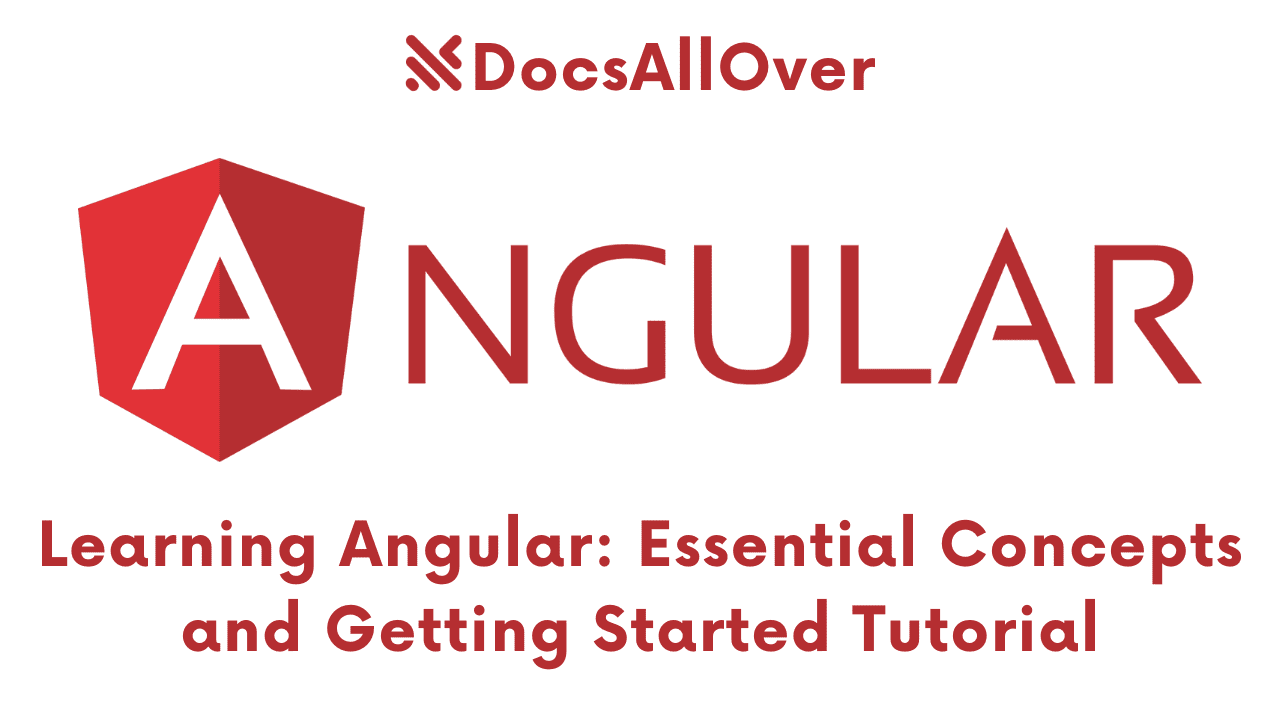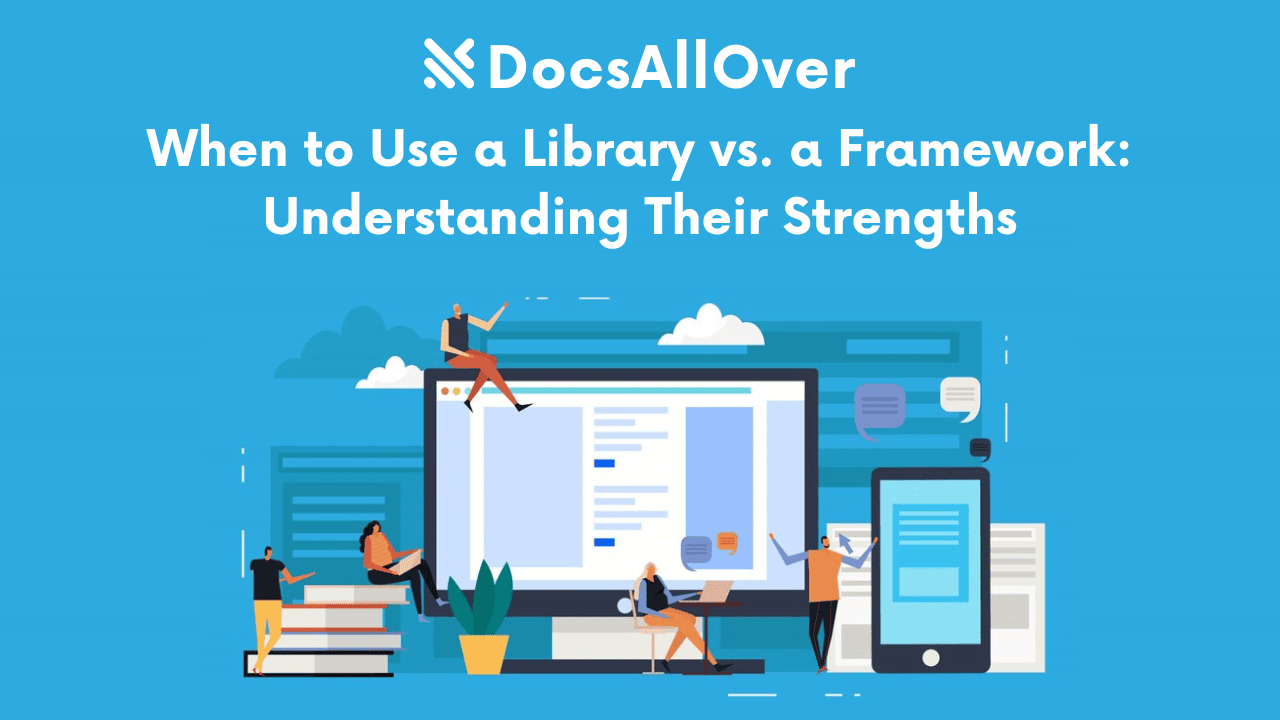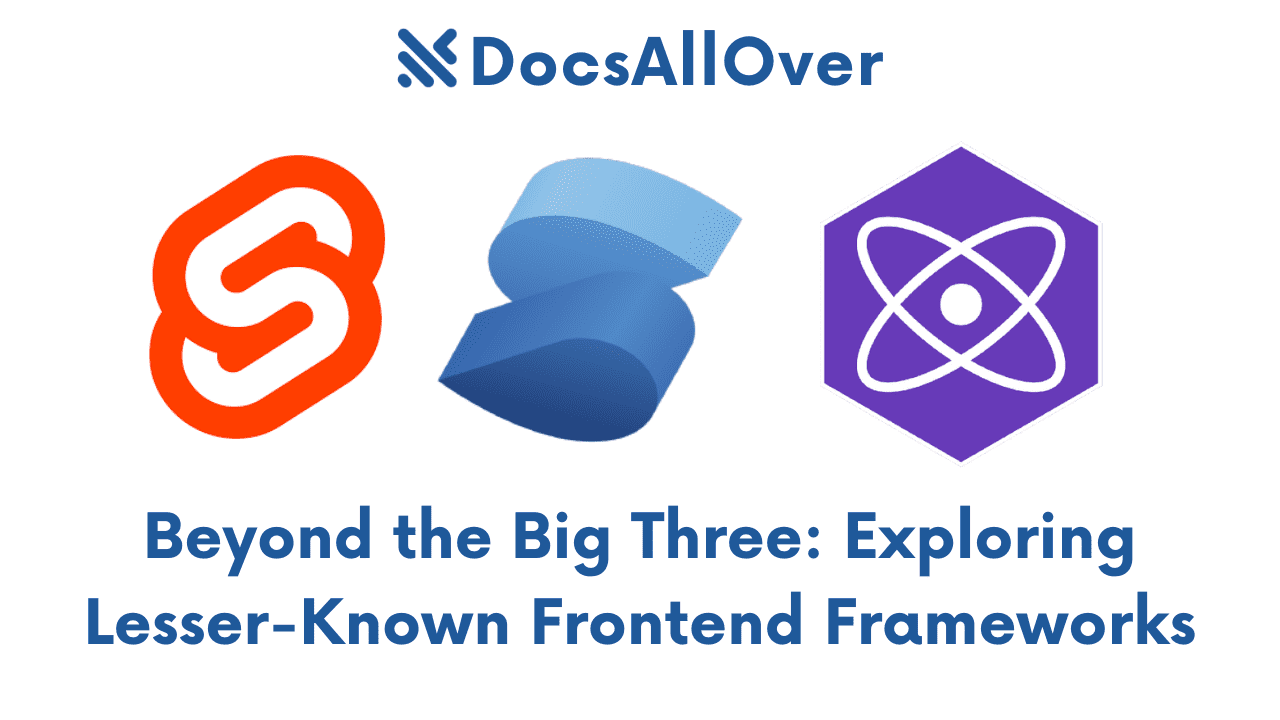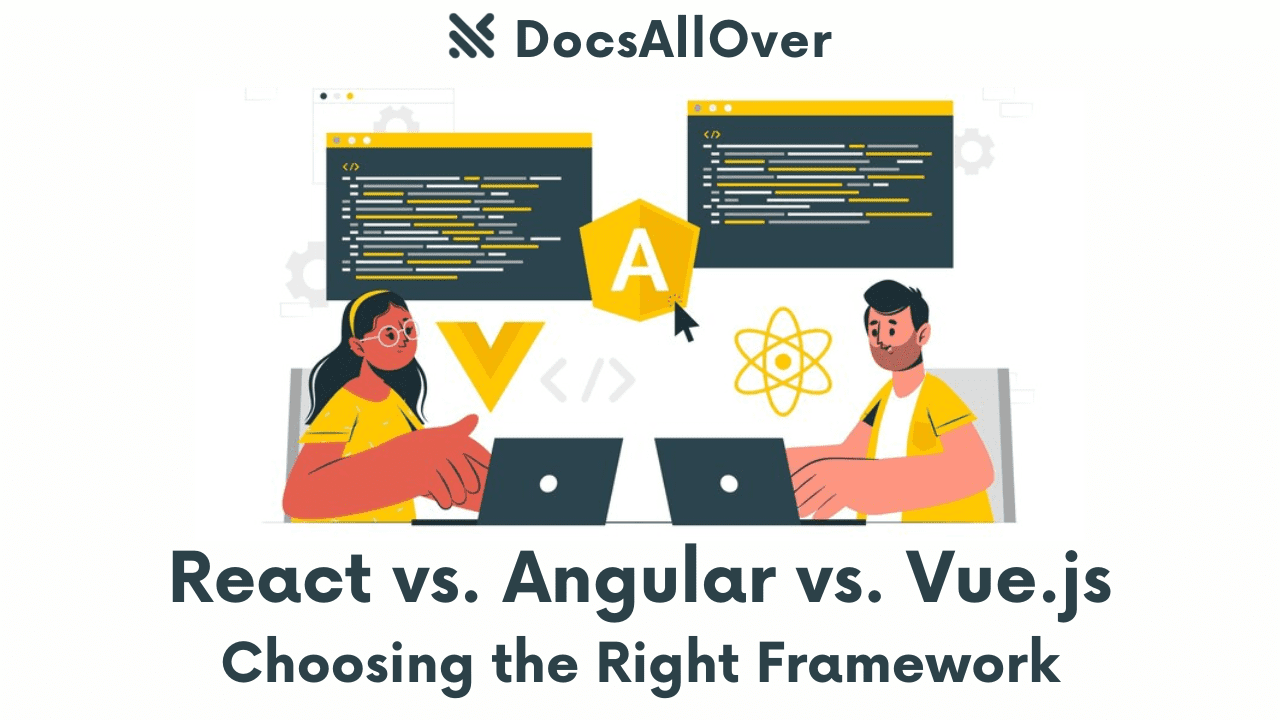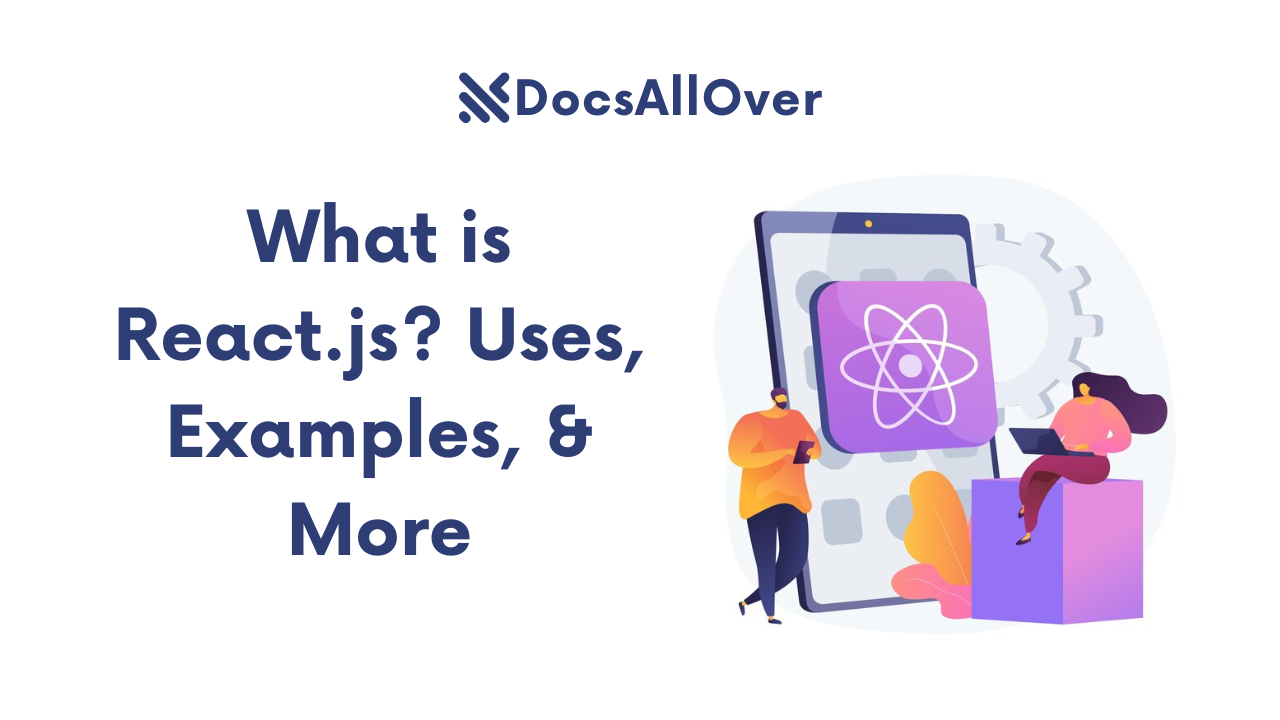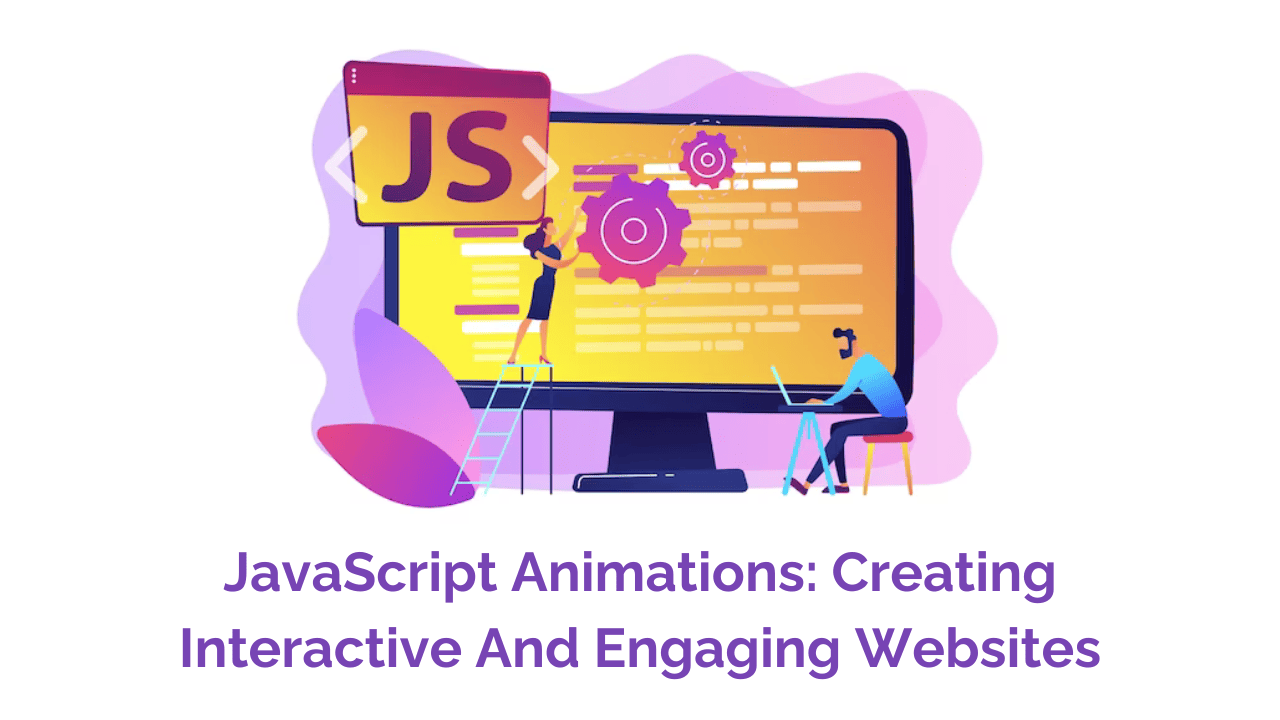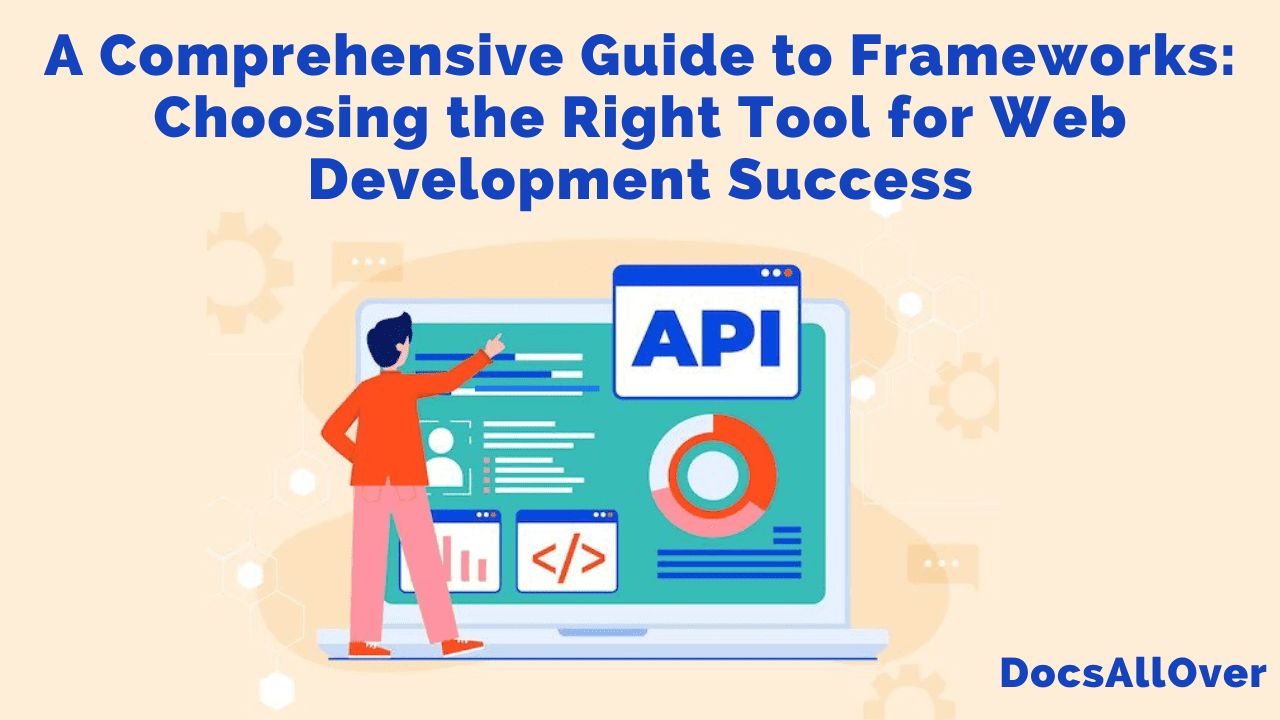Exploring the Latest Trends in Libraries and Frameworks for Web Development
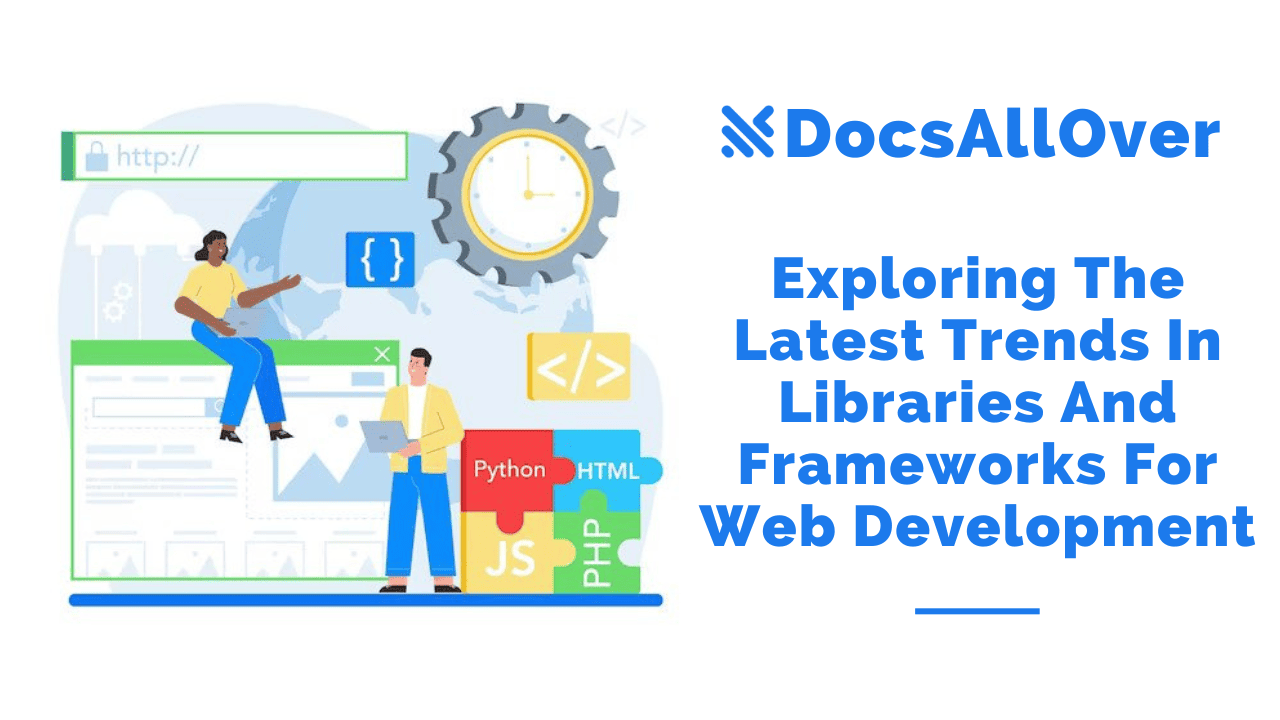
Staying updated with the latest trends in libraries and frameworks is crucial for developers. These tools play a vital role in simplifying development, enhancing productivity, and enabling the creation of robust and feature-rich web applications.
In this blog, we will dive into some of the trending topics in libraries and frameworks, exploring their benefits and highlighting popular options that developers can leverage.
Serverless Frameworks
What are Serverless Frameworks?
Serverless frameworks are a type of cloud computing platform that enables developers to build and deploy applications without managing servers. Serverless frameworks abstract away the underlying infrastructure, allowing developers to focus on building and shipping code.
Benefits of Serverless Frameworks
Serverless frameworks offer a number of benefits, including:
- Scalability: Serverless frameworks automatically scale your applications based on demand, eliminating the need to provision and manage servers.
- Cost-efficiency: You only pay for the resources that your applications consume, resulting in significant cost savings.
- Ease of development: Serverless frameworks abstract away the complexity of managing servers, enabling developers to focus on building and deploying applications.
- Agility: Serverless frameworks make it easy to deploy and update applications, accelerating development and delivery cycles.
- Security: Serverless frameworks offer a number of security features, such as built-in encryption and access control.
Popular Serverless Frameworks
There are a number of popular serverless frameworks available, including:
- AWS Lambda: AWS Lambda is a serverless compute service that allows developers to run code without provisioning or managing servers.
- Azure Functions: Azure Functions is a serverless compute service that allows developers to run code without provisioning or managing servers.
- Google Cloud Functions: Google Cloud Functions is a serverless compute service that allows developers to run code without provisioning or managing servers.
- Firebase Functions: Firebase Functions is a serverless compute service that allows developers to run code without provisioning or managing servers.
- Vercel: Vercel is a cloud platform that enables developers to build, deploy, and scale serverless applications.
How to Use Serverless Frameworks
To use a serverless framework, developers typically start by creating a function. A function is a piece of code that is executed in response to an event, such as an HTTP request or a message from a queue.
Once a function has been created, developers can deploy it to a serverless framework. The serverless framework will handle all of the underlying infrastructure, such as provisioning and scaling servers.
Applications of Serverless Frameworks
Serverless frameworks can be used to build a wide variety of applications, including:
- Web applications: Serverless frameworks can be used to build web applications of all sizes, from simple static websites to complex dynamic web applications.
- Mobile applications: Serverless frameworks can be used to build backend services for mobile applications.
- IoT applications: Serverless frameworks can be used to build backend services for IoT applications.
- Data processing applications: Serverless frameworks can be used to build data processing applications, such as batch processing and stream processing applications.
- Machine learning applications: Serverless frameworks can be used to build machine learning applications, such as image recognition and natural language processing applications.
Serverless frameworks offer a number of benefits for developers, including scalability, cost-efficiency, ease of development, agility, and security. Serverless frameworks can be used to build a wide variety of applications, including web applications, mobile applications, IoT applications, data processing applications, and machine learning applications.
Progressive Web Apps (PWAs)
Progressive Web Apps (PWAs) are web applications that use modern web technologies to provide an app-like experience to users. PWAs are fast, reliable, and engaging, and they can be accessed on any device with a web browser.
PWAs offer a number of benefits over traditional web applications, including:
- Fast loading times: PWAs are typically much faster than traditional web applications, as they use a variety of techniques to optimize performance, such as caching and service workers
- Offline access: PWAs can be used offline, which is ideal for users who have unreliable or intermittent internet access
- Push notifications: PWAs can send push notifications to users, which is a great way to keep them engaged with your app
- Installability: PWAs can be installed on the user's device, which provides them with a more app-like experience
PWAs can be used to build a wide variety of applications, including:
- E-commerce applications
- News applications
- Social media applications
- Gaming applications
- Educational applications
- Productivity applications
How to Build a PWA
To build a PWA, you will need to use a modern web development framework, such as React, Angular, or Vue.js. You will also need to use a service worker to enable offline access and push notifications.
Once you have built your PWA, you can deploy it to any web hosting provider. PWAs are supported by all major web browsers, so users will be able to access your app on any device.
Examples of Popular PWAs
Some popular PWAs include:
- Twitter: Twitter's PWA is a great example of how a social media app can be implemented as a PWA.The PWA is fast, reliable, and engaging, and it offers the same features as the native Twitter app.
- Flipkart: Flipkart's PWA is a great example of how an e-commerce app can be implemented as a PWA. The PWA is fast, reliable, and engaging, and it offers the same features as the native Flipkart app.
- Starbucks: Starbucks' PWA is a great example of how a brick-and-mortar business can use PWAs to improve the customer experience. The PWA allows users to order and pay for their drinks ahead of time, and it also offers features such as loyalty rewards and mobile payments.
PWAs are a powerful new way to build web applications. PWAs are fast, reliable, and engaging, and they can be accessed on any device with a web browser. PWAs can be used to build a wide variety of applications, from e-commerce apps to social media apps to productivity apps.
If you are looking for a way to build a web application that is fast, reliable, and engaging, then you should consider using a PWA.
GraphQL And Apollo
What is GraphQL?
GraphQL is a query language for APIs that allows developers to request the exact data they need, without over-fetching or under-fetching. GraphQL is also strongly typed, which helps to prevent errors and improve code quality.
Benefits of GraphQL
GraphQL offers a number of benefits, including:
- Flexibility GraphQL allows developers to fetch the exact data they need, without over-fetching or under-fetching
- Performance GraphQL queries are optimized for performance, resulting in faster data retrieval
- Type safety GraphQL provides type safety, which helps to prevent errors and improve code quality
- Self-documentation GraphQL schemas are self-documenting, making it easy for developers to understand and use GraphQL APIs
What is Apollo?
Apollo is a framework for implementing GraphQL in web applications. Apollo provides a comprehensive set of features, including a client library, server library, and cache. Apollo is also easy to use and get started with, even for developers who are new to GraphQL.
Benefits of Apollo
Apollo offers a number of benefits, including:
- Comprehensive feature set Apollo provides a comprehensive set of features for implementing GraphQL, including a client library, server library, and cache
- Ease of use Apollo is easy to use and get started with, even for developers who are new to GraphQL
- Large community Apollo has a large and active community of users and contributors, providing support and resources for developers
How to Use GraphQL and Apollo
To use GraphQL and Apollo, developers typically start by creating a GraphQL schema. A GraphQL schema is a document that describes the data that is available through a GraphQL API.
Once a GraphQL schema has been created, developers can use the Apollo client library to make GraphQL queries. The Apollo client library will automatically cache the results of GraphQL queries, which can improve performance.
Developers can also use the Apollo server library to implement a GraphQL API. The Apollo server library provides a number of features, such as authentication and authorization.
Applications of GraphQL and Apollo
GraphQL and Apollo can be used to build a wide variety of applications, including:
- Web applications GraphQL and Apollo can be used to build web applications of all sizes, from simple static websites to complex dynamic web applications
- Mobile applications GraphQL and Apollo can be used to build backend services for mobile applications
- IoT applications GraphQL and Apollo can be used to build backend services for IoT applications
- Data processing applications GraphQL and Apollo can be used to build data processing applications, such as batch processing and stream processing applications
- Machine learning applications GraphQL and Apollo can be used to build machine learning applications, such as image recognition and natural language processing applications
GraphQL and Apollo offer a number of benefits for developers, including flexibility, performance, type safety, ease of use, and a large community. GraphQL and Apollo can be used to build a wide variety of applications, including web applications, mobile applications, IoT applications, data processing applications, and machine learning applications.
Headless CMS
What is a Headless CMS?
A headless CMS is a content management system (CMS) that decouples the content management layer from the presentation layer. This means that content can be created and managed in the headless CMS, and then delivered to any front-end device or platform.
Benefits of Headless CMS
Headless CMSs offer a number of benefits, including:
- Flexibility: Headless CMSs give developers the flexibility to choose the front-end framework and architecture that best suits their needs.
- Scalability: Headless CMSs can be scaled to meet the demands of high-traffic websites and applications.
- Omnichannel support: Headless CMSs can be used to deliver content to a variety of devices and platforms, including websites, mobile apps, and digital displays.
- Security: Headless CMSs are generally more secure than traditional CMSs, as they do not have a front-end that can be attacked.
Popular Headless CMS Frameworks
There are a number of popular headless CMS frameworks available, including:
- Contentful
- Strapi
- Sanity
- DatoCMS
- Prismic
- DatoCMS
How to Use a Headless CMS
To use a headless CMS, developers typically start by creating a content type. A content type defines the structure of the content that will be managed in the headless CMS.
Once a content type has been created, developers can start creating and managing content. Content can be created in a variety of formats, including text, images, videos, and documents.
Once content has been created, it can be published to the headless CMS. The headless CMS will then generate an API that can be used to deliver the content to any front-end device or platform.
Applications of Headless CMS
Headless CMSs can be used to build a wide variety of applications, including:
- Websites: Headless CMSs can be used to build websites of all sizes, from simple static websites to complex dynamic websites.
- Mobile applications: Headless CMSs can be used to build backend services for mobile applications.
- IoT applications: Headless CMSs can be used to build backend services for IoT applications.
- Digital signage: Headless CMSs can be used to deliver content to digital signage displays.
- E-commerce: Headless CMSs can be used to build e-commerce websites and applications.
SEO-Friendly Tips for Headless CMS
When using a headless CMS, it is important to keep the following SEO-friendly tips in mind:
- Use relevant keywords throughout your content: This includes the title, meta descriptions, headings, and body text.
- Make sure your content is well-structured: Use clear and concise headings and subheadings to break up your text and make it easy to read.
- Include internal and external links: Linking to other relevant pages on your website and other websites will help search engines understand the structure of your website and the context of your content.
- Optimize your images: Use descriptive alt text for your images and compress them to reduce their file size.
- Submit your website to search engines: Once your website is up and running, submit it to search engines such as Google and Bing.
By following these tips, you can ensure that your headless CMS website is SEO-friendly and has a good chance of ranking well in search engine results pages (SERPs).
Jamstack
What is Jamstack?
Jamstack is a modern web development architecture based on JavaScript, APIs, and Markup. Jamstack applications are pre-rendered and served statically, which makes them fast, secure, and scalable.
Benefits of Jamstack
Jamstack offers a number of benefits, including:
- Performance: Jamstack applications are typically very fast and performant, as they are pre-rendered and served statically.
- Scalability: Jamstack applications can be scaled to handle high traffic volumes without any issues.
- Security: Jamstack applications are generally more secure than traditional web applications, as they do not have a server that can be attacked.
- Cost-efficiency: Jamstack applications can be very cost-efficient, as they do not require expensive servers or infrastructure.
- Developer experience: Jamstack is a developer-friendly architecture that provides a number of tools and libraries to make development easier and more efficient.
How to Use Jamstack
To build a Jamstack application, developers typically use a Jamstack framework. Jamstack frameworks provide a number of features and tools to help developers build and deploy Jamstack applications.
Some popular Jamstack frameworks include:
- Gatsby
- Next.js
- Nuxt.js
- Eleventy
- Static Site Generators
To use a Jamstack framework, developers typically start by creating a project. Once a project has been created, developers can start adding content and building their application.
Once the application is complete, developers can deploy it to a Jamstack hosting provider. Jamstack hosting providers specialize in hosting Jamstack applications and providing them with the performance, scalability, and security that they need.
Applications of Jamstack
Jamstack can be used to build a wide variety of applications, including:
- Websites
- Web applications
- E-commerce websites
- Blog websites
- Portfolio websites
- Landing pages
- Marketing websites
- Progressive Web Apps (PWAs)
Jamstack is a modern web development architecture that offers a number of benefits, including performance, scalability, security, cost-efficiency, and developer experience. Jamstack can be used to build a wide variety of applications, including websites, web applications, e-commerce websites, blog websites, portfolio websites, landing pages, marketing websites, and Progressive Web Apps (PWAs).
Single-Page Application (SPA)?
A Single-Page Application (SPA) is a web application or website that interacts with the user by dynamically rewriting the current web page with new data from the web server, instead of the default method of a web browser loading entire new pages. The goal is faster transitions that make the website feel more like a native app. In a SPA, a page refresh never occurs; instead, all necessary HTML, JavaScript, and CSS code is either retrieved by the browser with a single page load, or the appropriate resources are dynamically loaded and added to the page as necessary, usually in response to user actions.
Benefits of SPAs
SPAs offer a number of benefits, including:
- Improved performance: SPAs can load faster and be more responsive than traditional web applications, as they do not need to reload the entire page each time the user interacts with it.
- Enhanced user experience: SPAs can provide a more seamless and native-like user experience, as they do not require page reloads.
- Increased engagement: SPAs can help to increase user engagement by providing a more dynamic and interactive experience.
- Reduced development costs: SPAs can help to reduce development costs by simplifying the development process and making it easier to maintain and update applications.
Popular SPA Frameworks
There are a number of popular SPA frameworks available, including:
- React: React is a JavaScript library for building user interfaces. It is declarative, efficient, and flexible.
- Angular: Angular is a TypeScript framework for building single-page applications. It is powerful and feature-rich, but can be complex to learn.
- Vue.js: Vue.js is a JavaScript library for building user interfaces. It is lightweight, easy to learn, and flexible.
- Svelte: Svelte is a JavaScript compiler that compiles code into highly optimized vanilla JavaScript. It is fast and small, making it ideal for building SPAs.
How to Build a SPA
To build a SPA, developers typically follow these steps:
- Choose a SPA framework.
- Create a new project using the chosen SPA framework.
- Implement the user interface using the chosen SPA framework.
- Add functionality to the SPA using JavaScript.
- Connect the SPA to a backend server to fetch and persist data.
- Deploy the SPA to a production environment.
Applications of SPAs
SPAs can be used to build a wide variety of web applications, including:
- Social media applications: SPAs are often used to build social media applications, such as Facebook, Twitter, and Instagram.
- E-commerce applications: SPAs are also often used to build e-commerce applications, such as Amazon and eBay.
- Productivity applications: SPAs can be used to build productivity applications, such as Google Docs and Microsoft Office 365.
- Gaming applications: SPAs can also be used to build gaming applications, such as browser-based games and mobile games.
SPAs offer a number of benefits for developers and users alike. SPAs can be used to build a wide variety of web applications, and they are becoming increasingly popular as the demand for fast, responsive, and engaging web applications grows.
Microservices and containerization
Microservices and containerization are two of the most important trends in web development today. Microservices are a software design pattern that breaks down an application into a collection of small, independent services. Containerization is a technology that allows developers to package their applications and their dependencies into a single unit that can be easily deployed and run on any platform.
Microservices
Microservices offer a number of benefits, including:
- Scalability: Microservices can be scaled independently, making it easy to scale up or down specific parts of an application as needed.
- Resilience: Microservices are more resilient to failures than monolithic applications. If one microservice fails, the other microservices can continue to operate.
- Agility: Microservices make it easier to develop and deploy new features. Changes to one microservice do not affect the other microservices.
- Maintainability: Microservices are easier to maintain than monolithic applications. Each microservice is responsible for a specific task, making it easier to identify and fix problems.
Containerization
Containerization offers a number of benefits, including:
- Portability: Containers can be run on any platform that supports the Docker runtime. This makes it easy to deploy applications to different environments, such as on-premises, cloud, and hybrid environments.
- Efficiency: Containers are very efficient in terms of resource utilization. They share the underlying operating system kernel, which reduces overhead.
- Reproducibility: Containers are reproducible, meaning that they will run the same way on any platform. This makes it easier to troubleshoot problems and deploy applications to different environments.
Microservices and Containerization
Microservices and containerization are often used together. Microservices can be packaged into containers and deployed to a container orchestration platform, such as Kubernetes. This makes it easy to manage and scale microservices applications.
Examples of companies using microservices and containerization
Many large companies are using microservices and containerization to power their applications. Some examples include:
- Amazon
- Netflix
- Spotify
- eBay
- Uber
- Airbnb
Microservices and containerization are two of the most important trends in web development today. They offer a number of benefits, including scalability, resilience, agility, maintainability, portability, efficiency, and reproducibility. Many large companies are using microservices and containerization to power their applications.
If you are a web developer, it is important to learn about microservices and containerization. These technologies can help you build better, more scalable, and more resilient applications.
Machine learning and artificial intelligence (AI)
Machine learning and artificial intelligence (AI) frameworks are software libraries that provide a set of tools and components for developing and deploying ML and AI models. These frameworks can help developers to streamline the development process, improve the performance of their models, and make them more scalable and robust.
Some of the most popular machine learning and AI frameworks include:
- TensorFlow: TensorFlow is an open-source software library for numerical computation using data flow graphs. It is widely used for machine learning and artificial intelligence applications, such as image recognition, natural language processing, and machine translation. TensorFlow is supported by Google and has a large community of users and contributors.
- PyTorch: PyTorch is an open-source machine learning framework that is based on the Torch library. It is popular for its flexibility and ease of use. PyTorch is supported by Facebook and has a growing community of users and contributors.
- Scikit-learn: Scikit-learn is an open-source machine learning library for Python. It provides a wide range of machine learning algorithms, including classification, regression, clustering, and dimensionality reduction. Scikit-learn is easy to use and has a large community of users and contributors.
- Keras: Keras is an open-source neural network library for Python. It provides a high-level API for building and training neural networks. Keras is easy to use and makes it possible to build complex neural networks with just a few lines of code. Keras is supported by TensorFlow and PyTorch.
- Caffe2: Caffe2 is an open-source machine learning framework that is developed by Facebook. It is popular for its speed and scalability. Caffe2 is supported by Facebook and has a growing community of users and contributors.
- MXNet: MXNet is an open-source machine learning framework that is developed by Amazon. It is popular for its flexibility and scalability. MXNet is supported by Amazon and has a growing community of users and contributors.
These are just a few of the many machine learning and AI frameworks that are available. When choosing a framework, it is important to consider your specific needs and requirements. Some factors to consider include the type of ML or AI application you are building, the programming language you are comfortable with, and the features and capabilities of the framework.
It is also important to note that new frameworks are emerging all the time. It is a good idea to stay up-to-date on the latest trends and technologies in machine learning and AI so that you can choose the best framework for your needs.
Here are some of the benefits of using machine learning and AI frameworks:
- Streamlined development: Frameworks provide a set of tools and components that can help developers to streamline the development process. This can save time and effort, and help to produce higher-quality models.
- Improved performance: Frameworks are designed to optimize the performance of ML and AI models. This can lead to faster and more accurate predictions.
- Scalability and robustness: Frameworks can help to make ML and AI models more scalable and robust. This is important for applications that need to handle large amounts of data or that need to be deployed in production environments.
If you are developing machine learning and AI applications, using a framework is a good way to streamline the development process, improve the performance of your models, and make them more scalable and robust.
WebAssembly (Wasm)
WebAssembly (Wasm) is a binary instruction format for a stack-based virtual machine. Wasm is designed as a portable compilation target for programming languages, enabling deployment on the web for client and server applications.
Wasm was developed by the W3C and announced in 2015. It is now supported by all major web browsers, including Chrome, Firefox, Edge, and Safari.
Wasm offers a number of benefits over traditional web technologies, such as JavaScript and HTML. Wasm is much faster than JavaScript, and it can be used to write code that is more efficient and compact. Wasm is also more secure than JavaScript, as it is sandboxed and isolated from the rest of the browser environment.
Wasm can be used to build a wide variety of web applications, including:
- Games
- Multimedia applications
- Scientific computing applications
- Machine learning applications
- WebAssembly itself
How Wasm Works
Wasm is a binary format, which means that it is compiled directly to machine code. This makes Wasm much faster than JavaScript, which is interpreted at runtime.
Wasm is also a stack-based virtual machine, which means that it uses a stack to store data and arguments. This makes Wasm more efficient than JavaScript, which uses a heap to store data and arguments.
Benefits of Wasm
Wasm offers a number of benefits over traditional web technologies, including:
- Performance: Wasm is much faster than JavaScript, as it is compiled directly to machine code.
- Efficiency: Wasm is more efficient than JavaScript, as it uses a stack-based virtual machine.
- Security: Wasm is more secure than JavaScript, as it is sandboxed and isolated from the rest of the browser environment.
- Portability: Wasm is portable, meaning that it can be deployed on a variety of platforms, including web browsers, servers, and mobile devices.
Use Cases for Wasm
Wasm can be used to build a wide variety of web applications, including:
- Games: Wasm can be used to build high-performance games that run in the browser.
- Multimedia applications: Wasm can be used to build multimedia applications, such as video players and audio editors.
- Scientific computing applications: Wasm can be used to build scientific computing applications, such as linear algebra libraries and physics simulations.
- Machine learning applications: Wasm can be used to build machine learning applications, such as image recognition and natural language processing applications.
- WebAssembly itself: Wasm can be used to build WebAssembly itself. This allows developers to create custom Wasm compilers and runtime environments.
Wasm is a powerful new technology that can be used to build a wide variety of web applications. Wasm is faster, more efficient, and more secure than traditional web technologies. Wasm is also portable, meaning that it can be deployed on a variety of platforms.
As Wasm continues to mature and gain adoption, we can expect to see even more innovative and exciting applications built with this technology.
Staying abreast of the latest trends in libraries and frameworks is essential for developers aiming to build cutting-edge web applications. Whether it's adopting serverless architectures, exploring Progressive Web Apps, leveraging GraphQL, or embracing microservices, the right choice of libraries and frameworks can significantly enhance development efficiency and deliver exceptional user experiences. By exploring these trending topics and selecting the most suitable tools for their projects, developers can stay ahead in the rapidly evolving world of web development.
Remember, while trends may come and go, the fundamental principles of clean code, maintainability, and scalability remain key aspects of successful web development projects.
